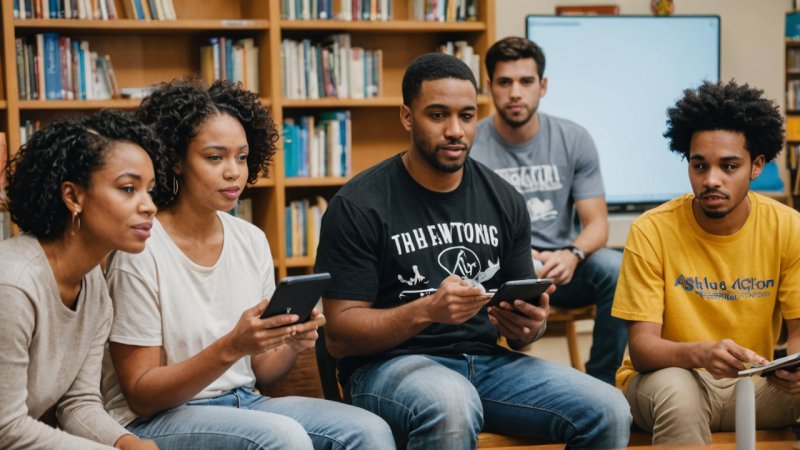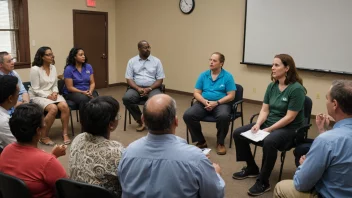In an era where social media has become an integral part of our daily lives, its potential as a tool for advocacy cannot be overstated. Literacy is a foundational skill that empowers individuals and communities, yet millions around the globe still struggle with reading and writing. By leveraging social media platforms, advocates can raise awareness, share resources, and mobilize communities around the cause of literacy. This article delves into how social media can be effectively used to promote literacy initiatives, engage audiences, and drive meaningful change.
The Role of Social Media in Literacy Advocacy
Social media serves as a bridge connecting people from diverse backgrounds and locations. Its reach is vast, allowing messages to spread rapidly and effectively. In the context of literacy advocacy, social media can:
- Raise Awareness: Posts can highlight the importance of literacy and share statistics that illustrate its impact on individuals and communities.
- Foster Community Engagement: Social media creates a space for dialogue, where advocates can share stories, experiences, and challenges related to literacy.
- Mobilize Action: Campaigns can be launched to encourage individuals to participate in literacy programs, volunteer, or support local initiatives.
Effective Strategies for Social Media Advocacy
To maximize the impact of social media in literacy advocacy, it is essential to implement effective strategies. Here are some key approaches:
1. Create Compelling Content
Content is king in the world of social media. Advocates should focus on creating engaging posts that resonate with their audience. This can include:
- Infographics: Visual representations of data can simplify complex information about literacy rates and challenges.
- Personal Stories: Sharing testimonials from individuals who have benefited from literacy programs can humanize the cause and inspire others.
- Video Campaigns: Short videos can be powerful tools for storytelling, showcasing the impact of literacy initiatives.
2. Utilize Hashtags and Trends
Hashtags increase the visibility of posts and can help advocates tap into larger conversations. By using popular hashtags related to literacy, education, and social justice, advocates can reach a broader audience. Additionally, joining trending discussions can position literacy advocacy within a larger context, emphasizing its relevance.
3. Collaborate with Influencers
Partnering with social media influencers who are passionate about education can amplify the message. Influencers can share content with their followers, drawing attention to literacy issues and encouraging support for advocacy efforts.
Building a Community of Advocates
Social media is not just about broadcasting messages; it’s also about creating a community. Building a network of literacy advocates can enhance the effectiveness of campaigns. Here are ways to foster community:
1. Host Virtual Events
Webinars, live discussions, and Q&A sessions can engage audiences and provide valuable information about literacy. These events allow for real-time interaction and can spark interest in advocacy efforts.
2. Create Support Groups
Online support groups can provide a platform for individuals to share resources, experiences, and strategies for promoting literacy in their communities. This collaborative approach can lead to innovative solutions and increased motivation among members.
3. Encourage User-Generated Content
Encouraging followers to share their own stories, experiences, or initiatives related to literacy can foster a sense of ownership and pride in the cause. Campaigns that invite users to post their content using a specific hashtag can create a sense of community and collective action.
Success Stories and Case Studies
Highlighting successful literacy advocacy campaigns can serve as inspiration for others. Here are a few notable examples:
- The #ReadToMe Campaign: This initiative encouraged parents to share videos of themselves reading to their children, promoting the importance of early literacy.
- Literacy Champions on Instagram: A group of educators and advocates used Instagram to share tips, resources, and personal anecdotes, creating a supportive online community.
- Twitter Chats for Literacy: Regular Twitter chats focused on literacy topics brought together educators, parents, and advocates to discuss challenges and share solutions.
Challenges and Considerations
While social media is a powerful tool, there are challenges to consider:
- Information Overload: With so much content available, it can be difficult for important messages to stand out.
- Digital Divide: Not everyone has equal access to technology or the internet, which can limit the reach of social media campaigns.
- Maintaining Engagement: Keeping audiences engaged over time requires consistent effort and creativity.
Conclusion
Social media has transformed the landscape of advocacy, providing new opportunities for promoting literacy and engaging communities. By creating compelling content, fostering a sense of community, and learning from successful initiatives, advocates can harness the power of social media to drive change. The journey toward improved literacy is ongoing, but with collective effort and innovative strategies, we can make significant strides in ensuring that everyone has the opportunity to read and write. As we embrace the digital age, let us use these platforms not only to inform but to inspire action and empower individuals through the gift of literacy.






